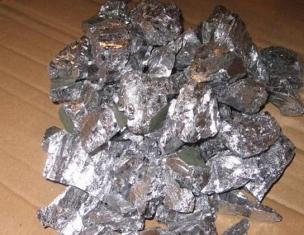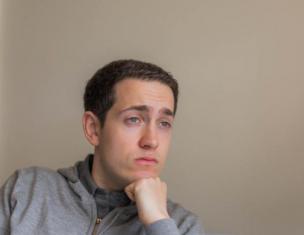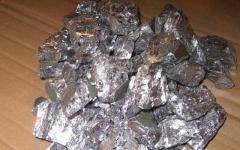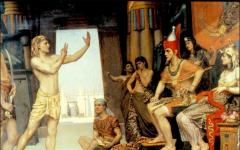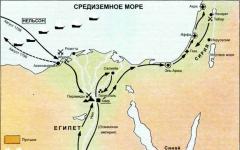Goals: Reinforce the correct pronunciation of sounds th in speech, learn to determine the position of sound in words, form an adjective from a noun, coordinate an adjective with a noun, develop the ability to write a descriptive story.
PROGRESS OF THE CLASS
I. Organizational moment.
The speech therapist offers a seat to the one who answers:
- what is the difference between a sound and a letter?
- what sounds are there (vowels, consonants);
- why are they called vowels;
- who can name a word in which the first sound is a vowel;
- talk about consonants;
- come up with words that start with a consonant sound.
II. Learning new material.
1. The teacher's assistant quietly launches a paper airplane into the classroom. And it shows a map where the chest with the treasure is located. Following a given route (for example: two steps forward from the window, one step to the right, three forward, etc.), children find a chest.
2. The speech therapist suggests guessing a riddle to open the chest:
“The tail is in the yard,
Nose in the kennel.
Who will turn his tail,
He'll get inside."
3. Children take turns taking pictures from the chest (T-shirt, snake, watering can, glue, tram, bench, balalaika, beehive, parrot, sparrow, coffee pot, yogurt) and put them on the easel, saying what is shown in the picture.
Speech therapist. What sound is found in these words? (Sound th)
4. Sound characteristics th : this sound is consonant, sonorous, always soft.
5. Determine the position of the sound th in every word.
Each child has a “speech ruler” on the table 1 . Children work independently, one child comments.
Words for reference: glue, ant, parrot, T-shirt, bench, sparrow, iodine, teapot, barn, ruler, tram, trolleybus, Dunno, yogurt, hero.
III. Introducing the letter th.
1. The speech therapist suggests looking at the letter and answering what it looks like, what letter.
“Y How AND in your notebook
To Y not to be confused with AND,
Write a tick at the top.”
2. “Print” the letter th in a notebook.
3. “Guess the word” (letters vary in height).
A kay M and the T-shirt
Speech therapist. The resulting word is “print” in the notebook.
4. Sound-syllable analysis of the word “shirt”.
One child understands the word at the board. At the same time, all the children lay it out at the tables. The child at the board intonationally divides the word into syllables, sequentially identifies sounds, names them in isolation, characterizes them (vowel, consonant, hard or soft) and denotes them with the corresponding chip.
Speech therapist. Which of these sections: “Dishware”, “Furniture”, “Clothing”, “Transport”, does the word MIKE belong to?”
IV. Physical education minute.
Imitation of putting on movements: hats, scarves, coats, scarves, mittens. Fastening zippers, buttons, tying shoelaces.
V. Consolidation of knowledge on the topic “Clothing”:
1. Game “What does it weigh?” What is there?”
The speech therapist gives children pictures of clothes. On the flannelgraph there is a picture of a cabinet. Each child names the clothes in his picture, while indicating its location in the closet (hang it or put it on a shelf).
- Description of one item of clothing according to the scheme (1. color; 2. material; 3. parts of clothing; 4. seasonality of clothing; 5. for whom the clothing is intended; 6. actions with clothing 2. The task is performed in a chain (one child starts, and the other continues).
- The speech therapist invites the children to listen to the sentence, find an error in it and pronounce it correctly.
a) Olya /winter/ has a hat and fur coat.
b) Masha has a /spring/ coat.
c) In the summer Anya put on a /white/ dress.
VI. Summary of the lesson.
Speech therapist. What sound did we meet today? ( th) Remember the words that contain this sound.
1 “Speech line” is a card with a chip overlaid to determine the position of a sound in a word (beginning, middle, end)
2 Tkachenko T.A. If a preschooler speaks poorly. – St. Petersburg: Aktsident, 1998. – 112 p., 33 l. ill.: li.


1. Lesson about the letter I
.jpg)

2. Riddles with a general word starting with I
My friend is holding on to my ear,
The century runs with me like one stitch. ( Needle and thread)

You can always find her in the forest.
You will go for a walk and you will meet.
Stands as prickly as a hedgehog,
In winter in a summer dress. ( Spruce)
Angry touchy-feely
Lives in the wilderness of the forest.
There are a lot of needles
And not a single thread. ( Hedgehog)

These are different objects, but what unites them together? - Needles!
How many syllables does this word have? - Out of three!
Why? - Since there are 3 vowel sounds.
Which syllable is stressed? - Second.
3. Game “The TV is Broken” (idea from here)
The adult says the sound I and lays out a card with a picture - the child needs to complete the word.
(and) pear, (and) golka, (and) zbushka, (and) rice, (and) raisin, (and) Indian






4. Making visual sound combinations from cards:
IA, AIU, OAI, UI
5. Development of phonemic awareness
a) clap (or raise a card with the letter I) to the sound [and] from the sound range:
A I O K N U I A I Y O U I
b) repeat only words with the sound “and”:
Willow, quince, duck, turkey, game, smile, bus, name, corner, July, needle...
6. Exercise with caps - move cap beads to each line:
And grandfather has it.
And my grandmother has it.
And mom has it.
And dad has it.
And we have.
To get to know him
You have to say it out loud.
(Name)
Name the names of boys and girls, and if the child hears the sound [and] in the name, then he needs to clap his hands:
Anya, Ulya, I van, I Lya, Anton, I Nna...
Olya, Semyon, I grief, Sasha, Vera, Masha, I nga, Alyosha, Pavel, I ra, Nastya, Vasya, Kolya, Anna, I rma, Klava
7. Game “One-Many” (the adult throws the ball to the child, calling the word in the singular, the child needs to throw it back, calling the word in the plural)
sock - socks
needle -
box -
door -
mug -
turkey -
toy -
glove -
thread -
snowflake -
boy -
fork -
drop -
girl -
umbrella -
boot -
8. Form antonym adjectives
high - low
wide - narrow
big - small
bad - good
cold - hot
9. Game "What's extra?" ("The Fourth Wheel")
Several pictures or objects are laid out and you need to determine in which picture there is no sound I (or just by ear).
1= bear, fox, wolf, tiger
2= glasses, wasps, willow, turkey
10. Miracle Tree
You need to select pictures (inscriptions) whose names contain the sound I and “hang” them on the tree like leaves. I made such a tree (print on A4) and leaves for it (A5) - I give you blank leaves, so you can write the necessary words there yourself:




11. Find the hidden letter I

12. The tale of the brothers Ik and Ishch ()
Once upon a time there lived two brothers. One was called Ie, and the other was Isch. Ik was small, and Ish was huge (showing “portraits”). Ik had a house, and Ishch had a house. Now I want you to help me tell you about Ike.
(The game exercise “Finish the sentence” is carried out).
Ike doesn't have a mouth, but...
Ike doesn't have a nose, but...
Ike doesn't have an eye, but... etc.
What about Ish? If he is so huge, it means that everything is very large in size.
Ishcha doesn't have a mouth, but...
Ishcha doesn't have a nose, but...
Ishch doesn’t have an eye, but... etc.
Many years have passed, but people have not forgotten about the brothers. If they want to name a small object, they think of Brother Ike. If you need to name objects of huge size, then they remember Brother Ishche.
The names Ik, Ish have a common sound. Name it, please.
13. Find all the letters I and circle them (
Today in the lesson we will talk about the letter, which can be called a cunning traveler. Cunning, because in appearance she is very similar to her neighbor in the alphabet, and also because her sound can hide well. And a traveler for the reason that in ancient times it either appeared in our alphabet or disappeared, and initially it was not considered a letter at all. And only in the last century did it have its permanent place in the alphabet, next to the vowel I. This is the letter Y (I short) and the sound [th’]. Sometimes the sound it represents is also called “yot.” So why did we need another letter I in our alphabet? First, let's remember the characteristics of sound [i]. The sound [and] vowel, it stretches, is sung. Now try to sing the sound [th’]. Didn't work out? Of course, because it's a short consonant. This means that in our alphabet the vowel [and] and the consonant [th’] have absolutely miscellaneous work, so we both need and are important. Today we will talk about only one work of the letter Y.
Let's start with the definition of the sound [th']. Place your hands on your throat or ears and pronounce the sound [th']. We felt the vibration, so it's ringing sound. Now remember one more trick of this sound: the sound [th’] is only soft, and it does not have a hard pair. This means that the sound [th’] is consonant, sonorous, soft. Now let's practice recognizing this sound in words.
Today we will go to the bird kingdom. Guess the riddle and name the place of the sound in the word: at the beginning of the word, in the middle or at the end.
Tick-tweet!
Jump to the grains!
Peck, don't be shy!
Who is this?
Sparrow- sound [th’] at the end of a word (Fig. 1).
White winged bird
Flies over the sea.
He will see the fish -
The beak is enough.
Chaika - sound [th’] in the middle of a word (Fig. 2).

Who is without notes and without a pipe
He produces trills best of all,
Answer...
Nightingale- sound [th’] at the end of a word (Fig. 3).

Little gray bird
Small bird,
You always move your neck.
Is there a need for this?
Wryneck- sound [th’] in the middle of a word (Fig. 4).

Rice. 4. Vertichneck ()
In the bird's joyful enthusiasm,
Firmly believing in success,
Which bird dives into the sea?
Without a doubt, the best?
Guillemot- sound [th’] in the middle of a word (Fig. 5).

It's not a rainbow, it's not a flame!
What kind of bird? Guess!
He chats with us all day
Multicolored...
Parrot- sound [th’] at the end of a word (Fig. 6).

I don't like to live without anything to do,
I get up at five o'clock,
Then I plant cedars with my beak,
Those are oaks in a deep forest.
Jay- sound [th’] in the middle of a word (Fig. 7).

Noise and din throughout the area,
The birds are running around in fright.
A predator appeared in the sky,
Looking for something to eat.
Hawk- sound [th’] at the beginning of a word: [yastr’ip] (Fig. 8).

We noticed that the sound [й’] appeared only once at the beginning of the word. The fact is that this sound is rarely found in words of the Russian language. There are few words that begin with the letter Y in our language, among them mainly geographical names, but not only. Try to name words starting with the letter Y.
Every child knows iodine.
Mom smears iodine on the wounds(Fig. 9) .

What dairy product should all children drink? Yogurt (Fig. 10).

A yogi will never say: “Oh!”
“Oh-oh-oh!” - the yogi will not shout(Fig. 11) .
Young man, control yourself!
Old, be like young!

Yorkshire Terrier, or York (Fig. 12).

Rice. 12. Yorkshire Terrier ()
Let's look at how the letter Y is written.
Because comma
He sits on her shoulders.
Consider the block letters. What do they remind you of? Letters Ii.
The letter Y is called I short.
Y like I in your notebook.
So that Y is not confused with I,
Write a tick at the top.
Jump-jump bar
And she lay down diagonally.
H has changed inside,
The result is the letter I.
And then above the letter I
The bird flew by
Become Y (I short) letter I
I wanted it right away.
What does the letter Y look like?
Got up and under the lantern,
We don't recognize him.
Changed - look
Stealthily looking at him.
Previously it was just I,
And now Y (I short).
Writer Viktor Khmelnitsky came up with his own story.
Previously, the letters Y and Y invited each other to visit, but the letter Y always left a wand in the hallway, and the letter Y could not distinguish it from soft sign. And when the letter Y came to visit, she left her hat on the hanger, and the hostess confused the guest with the letter I. In the end, they got tired of this confusion. What about tea? And now they drink tea in the garden. The letter Y keeps his wand with him, and the letter Y may not take off his hat(Fig. 13) .

Rice. 13. A fairy tale about the letters Y and Y
The sound and letter Y love to answer the question “which one?” Let's check it out. Look at the picture and tell me.
Which kitten (Fig. 14)?
Red, small, funny, soft, etc.

What kind of backpack (Fig. 15)?
School, new, heavy, beautiful, etc.

Rice. 15. School backpack ()
What kind of watermelon (Fig. 16)?
Striped, sweet, sugar, tasty, etc.

Let's read the words: oh, oh, hey- th helps to express feelings.
Replacing one letter in a word, we get another word: may - bark - paradise - swarm - mine.
The sound [th'] is always soft. So, the letter Y denotes the sound [й’], which is always soft, and the vowel I shows the softness of the preceding consonant.
Let's look at the written letters Y (Fig. 17, 18).
Look, look,
Dear friend,
Until what?
We are alike!
What we have in common is
You are like me
And I’m like you.
We look like chicks.
Maybe we are twins?

Rice. 17. Written and printed letter I ()

Rice. 18. Written and printed letter Y ()
What's the difference? Y has a tick or a bird on top.
Practice writing the letter Y.
Now let’s do the following task: listen to the poem and write down all the sounds [th’] with the letters Y. Hint: as many sounds as there are letters.
Next to my room
And there are a lot of friends there:
Ginger,
Grey,
Striped,
And wingless
And winged
And hornless
And horned,
And tailless
And tailed...
How many letters did you get? 9. What animals living in the forest did you imagine? Tell me.
Now let's write a short dictation.
Write the letter that represents the first sound in the word “Roma”.
Write the letter that represents the last sound in the word “lazy”.
Write the letter that represents the second sound in the word “forest.”
Write a capital letter N.
Write the capital letter of today's lesson.

Rice. 19. Test yourself
Homework
1. Practice writing the capital and small letter Y in cursive.
2. Remember and name 5 fairy tales whose names contain the letter Y.
3. Compose a little fairy tale about Oi and Ai.
References
1. Andrianova T.M., Ilyukhina V.A. Russian language 1. - M.: Astrel, 2011.
2. Buneev R.N., Buneeva E.V., Pronina O.V. Russian language 1. M.: Ballas, 2012
3. Agarkova N.G., Agarkov Yu.A. Textbook for teaching literacy and reading: ABC. Academic book/textbook, 2014
1. Festival pedagogical ideas"Open lesson" ()
And again a section for you learning letters. As you guessed correctly, today we have a consonant letter "Y". Why consonant? And make a sound. Well, how easily does sound travel? Of course, he encounters obstacles, his tongue and teeth get in the way.
You won’t see this sound at the beginning of a word so often, but in the middle and at the end of a word as often as you like. So start with this, come up with words with the sound “Y”. Lay out or sculpt the letter.
I'm just offering to help you practical material: artistic word , games, tongue twisters, riddles.
Letter "Y"

Funny poems
| Iodine is good, iodine is not evil. In vain you shout: “Oh-oh-oh!” – I just saw a bottle of iodine. Iodine sometimes burns, of course, But it will heal faster Iodine smeared wound. V. Lunin A bird flies over the gate, But he doesn’t sit on the gate. E. Tarlapan I have a needle and thread I am learning to sew from my mother. If I prick my finger, I'll pour iodine into the wound. |
Oh-oh and Ay-ay - Oh-oh-oh! - said Oh-oh. – I, my friend, am quite big! - Go for a walk, Everything will pass! - said Ai-ai. G. Vieru Because comma Sits on her shoulders. V. Kozhevnikov A yogi would help Ivan, May the yogi live beyond the sea. |
Patter
Distressed Magpie
Returning from class.
I spent the entire lesson chatting with the jay.
And she returned home with a deuce.
Proverbs and sayings
1. Don’t have a hundred rubles, but have a hundred friends.
2. Make new friends, but don’t lose old ones.
3. Don't be afraid of the cold. Wash up to your waist.
Games
Game "Who is more".
Think of words with the sound [th] at the beginning (iodine, yogi, iota), in the middle (T-shirt, watering can, snake), at the end of a word (May, tea, region).
Game "Turning words".
Change the words so that they mean a request, an order, an incentive to action: worth ( stop), washes ( my), builds ( build), sings
(sing), decides ( decide), plays ( play), repeats ( repeat), floats ( swim), thinks ( think).
Game "Where is the sound".
The teacher asks the children to determine the position of the letter “th” in the words: strong, jockey, puck, iodine, ruler.
Game "Recognize the sound."
Clap your hands once when you hear the sound [th] in the words: fox, husky, player, face, washbasin, nightingale, bus, trolleybus, scissors, car, snake, name, tea.
Game “Say the Word”.
Game "Curious".
- What is your name? (Andrey.)
– What do you like for breakfast? (Egg.)
– What type of transport do you prefer? (Tram, trolleybus.)
– Where do you like to go on your days off? (To the museum.)
– What do you use to collect water to water the flowers? (Into the watering can.)
– What fruit do you like? (Quince.)
– What drink do you like? (Tea.)
Game "The letter is lost."
Fill in the missing letters in the words:
sha - ba, gero -, tram -, studying - those.
Game "Turning words".
1. Fill in the missing letters in the words:

Answer: T-shirt, nut, bunny, husky, gang;
watering can, lath.
2. Change each word so that it contains the letter "th".
Builder ( construction), pour ( watering can), hare ( bunny), reader ( read), winter ( in winter).
Game "Entertaining Models".
Make up words using the following models.
1. – – th (May, bark, tea, howl, fight.)
– – th – – (T-shirt, T-shirt, seagull, jay, nut.)
2. – – ah (Edge.)
– – – ah (Barn, lichen.)
– – – – ah (Custom, occasion.)
- - - to her (Museum, lyceum, jockey, wheatgrass.)
Riddles
Well, my dears, yours practical advice added one more letter, this letter "Y".
Purpose of the lesson: learning the letter Y, developing reading skills, developing speech skills, improving phonemic hearing, the basics of elementary graphic skills.
- introduce the preschooler to the letter Y and the correct pronunciation of the sound;
- teach how to write the printed letter Y in squares;
- generate interest in learning poems and riddles.
Name what is shown in the pictures below:
Kettle Parrot Yogurt Yog
- Please listen to the words (emphasize the last sound in your voice): mine, yours, wild, kind, smart.
- What sound is there in all these words?
- What sound is there in both the word PARROT and the word MIKE?
- At the beginning, at the end or in the middle of a word is the [Y] sound in the word PARROT? - MIKE? - GIVE IT? - AIBOLIT?
When we pronounce the sound [Y], the tip of the tongue is behind the lower teeth, and the back of the tongue rises to the palate. Say: YYY. The back of the tongue rises to the palate and prevents air from freely leaving the mouth when we pronounce the sound [Y].
- Vowel or consonant sound [Y]?
- Voiced or voiceless?
- Why?
- Look at the letter Y. What letter does it look like?
The letters are similar, but the sounds are completely different: [I] is a vowel, and [Y] is a consonant sound.
Repeat: BUNNY. What is the first syllable in this word?
What is the second syllable in this word?
Similarly - with the words MIKE, SMART, STUPID, TRAM, AIBOLIT.
Read the words:
my, my, smart, kind, red, hero, bunny, stupid, strong, green, funny, tram.
Assignment: printed letter Y for preschoolers
Examine the letter Y. Sew the letter Y in the air and once in the notebook, carefully in the cells with a simple pencil or ballpoint pen.
In cases where the child is asked to write a whole line of a letter, syllable or word, the adult gives a writing sample at the beginning of the line.
If a preschooler has difficulties, then an adult can draw two approximate lines, or put reference points that the child will connect with lines, or write the entire letters, and the child will simply circle them in a different color. Calligraphy should not be required at this stage of training.

Continue the sentence
The house on rails is right there.
He will kill everyone in five minutes
Sit down and don't yawn,
Departs... (tram).
Guess what we sang?
Kara... (wai).
Guess what they sang to us? Bye... (bye).
What month is it, guess? Month... (May).
What's in the glass, guess? Sweet... (tea).
Tale about the letter Y
What do you know about yoga?
“What do you know about yogis?” - that was the name of the book that the mouse Mouse found in the garden. On the cover there was a picture of a naked guy - a yogi, who, as if nothing had happened, was lying on nails sticking out of the board.
In other pictures, the same yogi simply stood with his bare feet on hot coals or sat frozen in a block of ice. In addition, Mouse read that yogis can go without eating or drinking for months.
- We must try! - decided Mouse.
“I can imagine what will happen when mom opens the refrigerator, and I’m sitting there frozen and smiling. Or dad opens the stove, and I sit there on the coals and say: “What, I’ve never seen yoga, or what?”
To begin with, he hammered nails into the board and just lay down on them when he immediately jumped up and started yelling at the whole garden:
Ohhhhh!!!
He ran home, took out iodine and began to smear the nail scratches on himself. And iodine burns! Mouse smears, groans, and thinks: “I’ll throw this book to the cat.” Let him be a yogi now.”
Riddles for children starting with the letter J
When it boils, steam comes out,
And it whistles and bursts with heat,
The lid rattles and knocks.
- Hey, take me off! - shouts.
(Kettle)
Amazing carriage!
Judge for yourself:
The rails are in the air, and he
He holds them with his hands.
(Trolleybus)
In the woolen clearing
The thin leg is dancing.
From under a steel shoe
A stitch creeps out.
(Sewing machine)
It might break.
It might cook
If you want, into the bird
It may turn.
(Egg)
Tell me who is so afraid of things,
Like a stick is a dog,
How is a stone a bird?
(Lazy guy)
I run to my mother river
And I can’t remain silent.
I am her own son,
And he was born in the spring.
(Stream)
He produces sheets
Wide latitude.
Supported by strong stems
One hundred rough, tenacious fruits:
If you don't get around them -
You will find them all on yourself.
(burdock)
He grew up angry and prickly in the field,
Needles in all directions.
(burdock)
I am always friendly with the light.
If the sun is in the window,
I'm from the mirror, from the puddle
I run along the wall.
(Sunny Bunny)
There's a button on the head
There is a sieve in the nose,
One hand
Yes, and the one on the back.
(Kettle)
Funny poems about the letter J for children
Iodine is good, iodine is not evil.
In vain you shout: “Oh-oh-oh!”
- I just saw a bottle of iodine.
Iodine sometimes burns, of course,
But it will heal faster
Iodine smeared wound.
(V. Lunin)
Let's play, bunny,
Play with me.
The bunny answers:
- I can’t, I’m sick!
Oh-oh-oh, poor thing!
(E. Blaginina)
Oh-oh-oh! - said OH-OH.
- I, my friend, am completely sick!
- Go for a walk!
Everything will pass! - said AY-AY.
(G. Vieru)
A yogi will never say: “Oh!”
“Oh-oh-oh!” - the yogi will not shout.
Young man, control yourself!
Old, be like young!
(V. Berestov)
I am on the tails of birds and animals:
Here is an ermine, here is a sparrow.
(E. Grigorieva)
At the station "I Brief"
We were greeted with a riddle:
“Read, dare and guess -
How, without getting up from your seat,
You can turn the tram
On many trams?
...What to miss
So that you can have a bunny
Turn into a stutterer?
One of us for about three minutes
I thought about the solution
And he answered, “Erase the hook.”
Above the letter “And short”.
(S. Marshak)
The ant found a blade of grass
There was a lot of trouble with her.
Like a log thrown onto your back,
He carries her home...
He bends under the burden.
He is already crawling with difficulty.
But what a good one
The ants are building a house!
(3. Alexandrova)
Lesson summary:
- Pronunciation of new words increases vocabulary preschooler, develops speech and memory.
- Cell exercises develop fine motor skills of the hands.
- Riddles develop children's intelligence, ability to analyze and prove. Educators use riddles when teaching children to increase interest during complex tasks.
- Poems influence not only the development of memory. It has been proven that if you learn a few lines every day, new ones appear in the brain. neural connections, overall learning ability increases.


